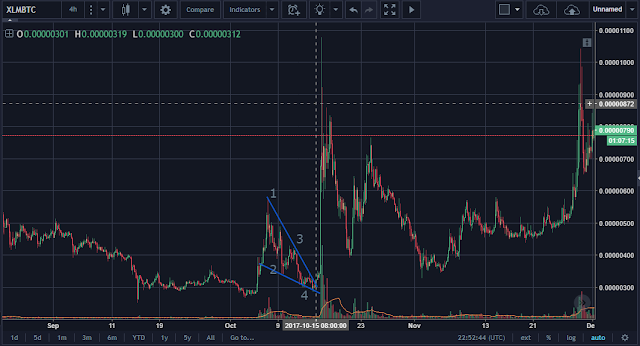Wedges
An upward wedge
An upward wedge is a
formation that "always" promises a price drop. It often develops
during short rises with long-term falls or in the last phase of the boom.
Determination of the wedge is possible only after noticing four points (1,2,3,4)
turning, which determine the upper and lower edge of the
wedge. The exit from the wedge (X) should occur not earlier than 30%
before its end (the beginning and the end define: the first point - the turning
point and the vertex. Very often, after breaking, there is a short return
movement up (marked in yellow) and only then there is a further discount. The
size of the drop is indirectly dependent on the height of the wedge.
Strategy:
If you have shares:
- sell after breaking down
Drop wedge
The discounted wedge
is a formation that "always" promises a price increase. It is more
often shaped during the medium-term adjustment of the upward trend than during
long-term decreases. Determination of the wedge is possible only after noticing
four turning points (1,2,3,4), which determine two decreasing straight lines -
the upper and the lower edge of the wedge. Breaking from the wedge (W) should
take place no earlier than 30% before its end (the beginning and the end
determine: the first point - the turning point and the vertex) and should
be confirmed by the significant increase in the volume of turnover. Very often,
after breaking, there is a correction and only after this
correction there is a proper increase. Its length is indirectly dependent on
the height of the wedge, however, the increase usually ends near the nearest
clear resistance.
Strategy
If you have shares:
- sell on 3 and buy back the shares on 4
If you do not have
shares:
- buy only after breaking up (confirmed by an increase in the volume of turnover and at the right time)



0 comments:
Post a Comment